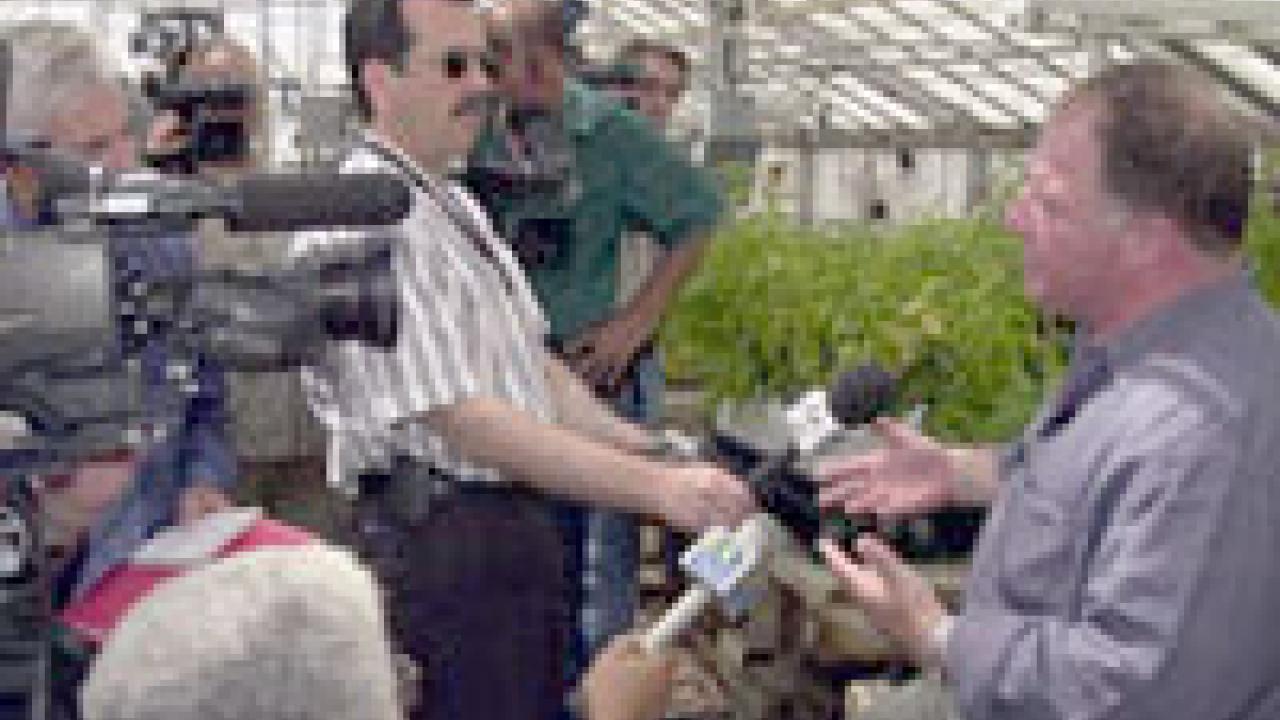The legendary UC-Blackwelder tomato harvester, which arguably saved California's processed tomato industry in the 1960s and raised concerns that machines were depriving people of employment, was recently designated a historic landmark during ceremonies at the University of California, Davis.
That honor was bestowed by the American Society of Agricultural and Biological Engineers, and coincided with the dedication of UC Davis' Joe A. Heidrick, Sr. Western Center for Agricultural Equipment. The ceremonies were held October 7 and 8, respectively.
The harvester becomes the society's 45th historic landmark, joining such icons as John Deere's steel moldboard plow, the McCormick Reaper, Eli Whitney's cotton gin, the row-crop tractor and the self-propelled combine. In California, it is the sixth such landmark, along with the Holt track-type tractor and steep-slope combine, the Rainbird sprinkler, FMC's continuous rotary sterilizer for canned goods and the roll-over protective structure for tractors, which also was developed, in part, at UC Davis.
"The tomato harvester is a perfect example of the shared history of agricultural engineering and biology," said Bruce Hartsough, chair of the UC Davis Department of Agricultural and Biological Engineering. "It required the parallel collaborative development of tomato varieties that were resistant to mechanical damage, were easily detached from the vine and ripened uniformly."
In 1949, UC Davis agricultural engineer Coby Lorenzen teamed up with UC Davis vegetable crops researcher Jack Hanna to develop a harvester and a tomato variety that could withstand the rigors of mechanical picking. Hanna had initiated the work on tomato varieties several years earlier. Engineering the equipment was no small challenge because tomato harvesting requires multiple functions, including cutting and lifting the vines, then separating the tomatoes from the vines.
During the 1950s, the UC Davis team refined the experimental harvester and in 1959 convinced Blackwelder Manufacturing of Rio Vista to commercialize the design.
"Mechanical harvesting was controversial because it seemingly displaced human labor," said Hartsough. "However, by reducing harvesting costs by nearly one half, the harvester eliminated an economic constraint on the U.S. processing tomato industry, resulting in large increases in tomato acreage and yield. Those increases, in turn, provided additional employment in field work, transportation and processing that more than offset the displaced harvesting jobs."
The Western Center for Agricultural Equipment was completed in 2001 and named in honor of the late Joe A. Heidrick Senior, a longtime Yolo County farmer and agricultural equipment innovator. The center was made possible by donations of more than $2 million from the Heidrick family and many others involved with agriculture. It provides facilities for UC Davis' machinery-oriented courses, for research and for training of the equipment industry's personnel.
Media Resources
Pat Bailey, Research news (emphasis: agricultural and nutritional sciences, and veterinary medicine), 530-219-9640, pjbailey@ucdavis.edu
Bruce Hartsough, Biological and Agricultural Engineering, (530) 752-0103, brhartsough@ucdavis.edu
